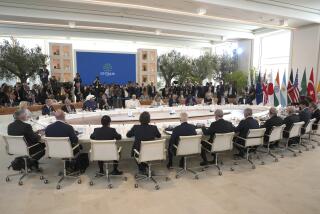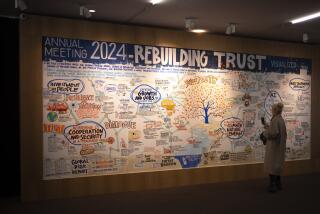Fixing World Economy Gremlins
- Share via
The economies of the seven richest countries look better this year than last as their leaders and Russia’s President Boris N. Yelt- sin open their annual summit meeting Friday. But, just beneath the gross domestic product numbers, the picture is less rosy. Many of the structural problems that plunged Asia into a financial turmoil in 1997 remain, European economic growth is fragile and even the United States’ economy is beginning to show imbalances. Rather than cheering the end of a crisis, the G-8 leaders should leave the summit in Cologne, Germany, determined to finish the restructuring needed to assure growth.
The prospect of a global economic crisis is more distant today than it was last summer. The biggest risk now is complacency.
Japan has reversed five quarters of decline with a surprising first-quarter growth, but this might well reflect the government’s priming of the economic pump rather than structural improvements. Japan must still modernize the corporate sector, finish clearing up the bad-loan mess, weed out excess capacity and do more to open its markets to imports.
Western Europe is also reporting economic upturns, but the growth is anemic and unlikely to speed up without structural changes. Perhaps the most pressing area for reform is the rigidly controlled labor market, especially in France and Germany, which keeps the cost of labor high and increases joblessness.
In the U.S. economy, growth itself is spawning inflationary pressures. The benign May inflation figures released Wednesday calmed some investor jitters, but the 2.6% inflation rate so far this year is well ahead of the 1.6% in 1998, pushing up bond rates.
The United States cannot carry the world economy indefinitely. Japan and Western Europe will have to pick up the slack with solid, consumption-driven growth at home. That should be the message from the G-8 summit.
More to Read
Inside the business of entertainment
The Wide Shot brings you news, analysis and insights on everything from streaming wars to production — and what it all means for the future.
You may occasionally receive promotional content from the Los Angeles Times.










